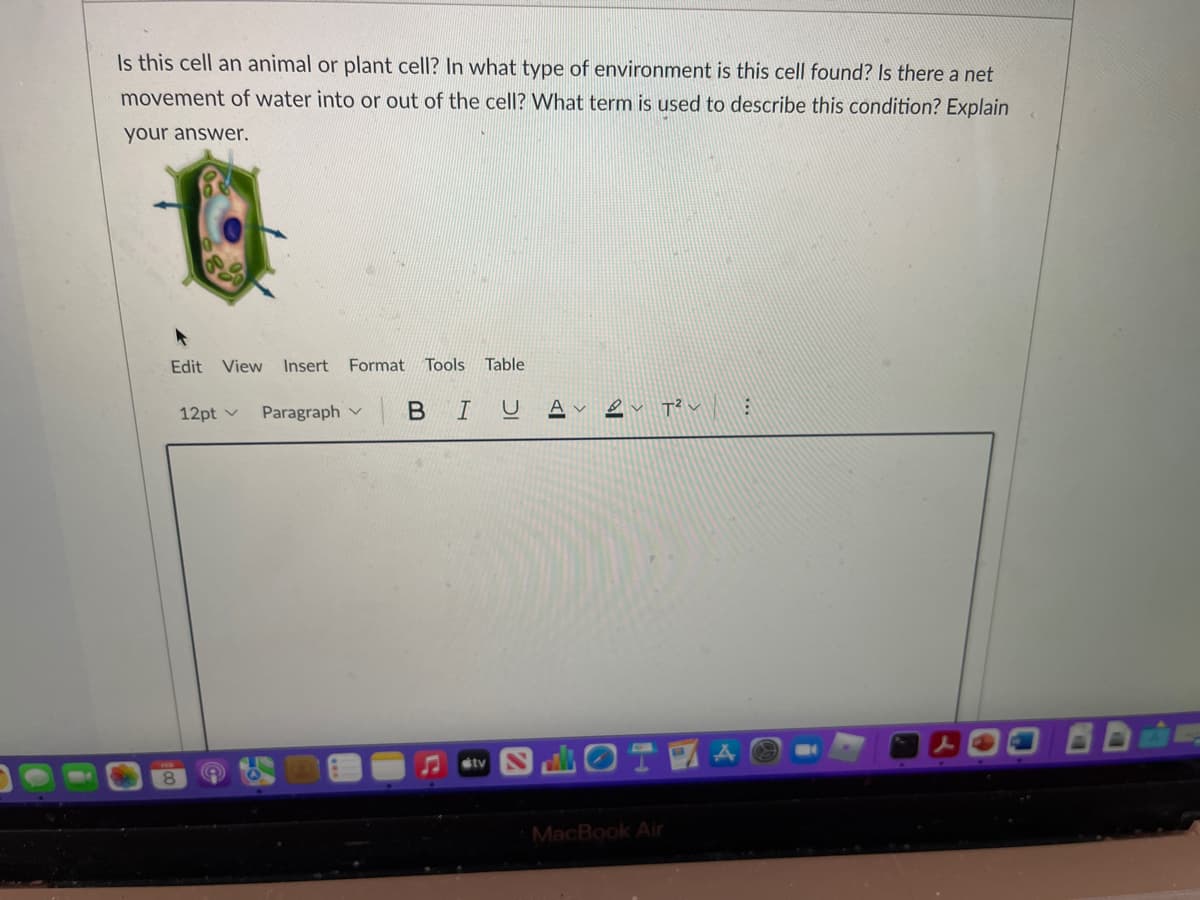Is this cell an animal or plant cell? In what type of environment is this cell found? Is there a net movement of water into or out of the cell? What term is used to describe this condition? Explain your answer. Edit View Insert Format Tools Table 12pt v Paragraph v |BIU A v
Structure and Composition of Cell Membrane
Despite differences in structure and function, all living cells in multicellular organisms are surrounded by a cell membrane. Just like the outer layer of the skin separates the body from its environment similarly, the cell membrane, also known as 'plasma membrane,' separates the inner content from its exterior environment.
Cell Membrane
The cell membrane is known by different names like plasma membrane or cytoplasmic membrane, or biological membrane. The term "cell membrane" was first introduced by C. Nageli and C. Cramer in the year 1855. Later on, in 1931, the term "plasmalemma" for cell membrane was given by J. Plowe. The cell membrane separates the cell's internal environment from the extracellular space. This separation allows the protection of cells from their environment.
Prokaryotes vs Eukaryotes
The cell is defined as the basic structural and functional unit of life. The cell membrane bounds it. It is capable of independent existence.

Eukaryotes are organisms with a nucleus encased within a nuclear envelope in their cells. Eukaryotes are members of the Eukaryota domain. Eukaryota is one of the three domains of life, with bacteria and archaea (the prokaryotes) making up the other two.
Other membrane-bound organelles found in eukaryotic cells include mitochondria and the Golgi apparatus, and chloroplasts are found in plants and algae. Primitive organelles may exist in prokaryotic cells. Eukaryotes can be unicellular or multicellular, and they contain a variety of cell types that create various types of tissue; prokaryotes, on the other hand, are usually unicellular.
Eukaryotes have the ability to reproduce both asexually and sexually through mitosis and gamete fusion. One cell divides into two genetically identical cells during mitosis. DNA replication is followed by two rounds of cell division in meiosis, which results in four haploid daughter cells. These serve as gametes or sex cells. Each gamete has just one set of chromosomes, which are a unique mix of the corresponding pair of parental chromosomes due to genetic recombination during the meiotic process.
Trending now
This is a popular solution!
Step by step
Solved in 3 steps




